- This web page was last updated on
Sat, 2015 Aug 22 @ 1551 hours
- Questions about this page?
Contact us by email.
| Sensors |
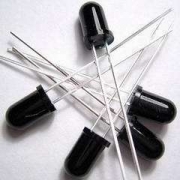
|
Infrared Phototransistor - 5mm Phototransistor sensitive to invisible infrared light.
Often used to receive an invisible beam from an Infrared LED. Package of five(5).
|
Qty=5
$1
|
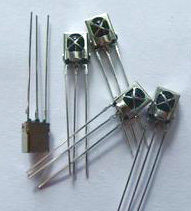
|
TL1838 Infrared Receiver IC 38 KHz - Infrared Receiver that amplifies and filters
invisible IR beam, and detects 38 KHz modulation. This way it can be insensitive to room light. This is the
approach used in most handheld remotes for TV etc. This can be used to receive signals from almost all
handheld remotes, so you can use them to control Arduino.
|
Qty=3
$2
|
Qty=5
$3
|
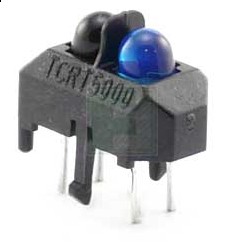
|
Reflective Infrared Sensor TCRT5000 with transistor output. The LED emits invisible
Infrared Light. The Phototransistor detects the reflected light. Often used as a close-in Robot object sensor,
paper or position sensor etc
|
Qty=3
$2
|
Qty=5
$3
|
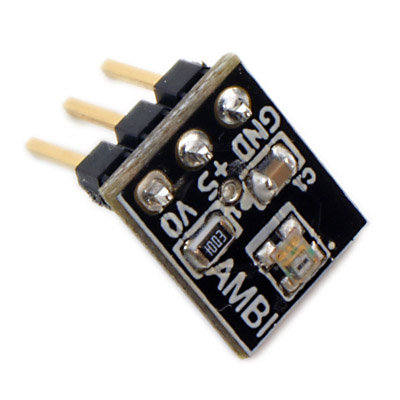
|
Ambient Light Sensor - Until recently it has been tough to find a
light sensor with a logarithmic response curve; the useful TAOS sensor line doesn't even include one.
Enter the Sharp GA1A1S201WP chip, with a built-in log amp, When it's in an extremely dark room, it reads
zero on the Arduino's 10 bit A/D, when it's taken outside into direct sunlight it reads around 960 (which
is not even saturated yet - maybe in the tropics it would hit 1023). Other values are in between.
|
$5
|
The AMBI light sensor has a spectral response similar to the human eye, which means the sensor is highly
accurate when used this way and can capture an astonishingly wide range of light values (3 to 55000 lux).
It performs very similarly to a light meter, and works at up to +7V, or down to 3 volts, and operates
accurately across a wide temperature range between -40 and +85 C.
One thing that should be said is that the output of this sensor is current. This current is converted
to a voltage by a 50K load resistor. So you can't really power anything such as an LED with the sensor,
it's only really useful for running into an A/D converter. Also the spec sheet recommends a 27K load
resistor and we have used a 100K resistor, to get a little more sensitivity on the dark end. If you are
using this outside in direct sunlight, you may want to add another 50K resistor in parallel with the
output, so the sensor does not saturate (go to maximum).
The sensor produces a voltage output, so all you need to do is run the output into an A/D converter, such
as analog pins on an Arduino. It is not a high current output, so don't try to drive anything with this
sensor directly, you must hook it up to an op amp follower if you want to use the voltage for something.
Here's the one-line Arduino code:
Serial.println(analogRead(0)); // print out value of light sensor on analog pin 0
The board comes with all surface mount parts fully assembled and a loose 3-pin male header.
Applications
- General photocell replacement
- Weather stations
- Robotics: light seeking / avoiding
behaviors, proximity (by light obstruction), motion sensing
- Room occupancy detection and or light adjustment
- Calculating camera exposures
Specifications
|
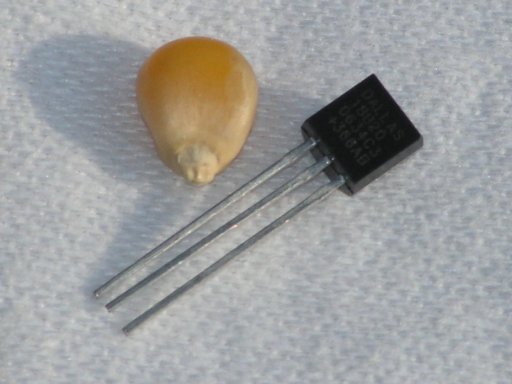
|
The Dallas Semiconductor DS18B20 One-Wire Temperature Sensor 12 bit
precision in a TO-92 case. Readily useable with most versions of PICAXE(R) firmware, Basic Stamp(R) 2P, and Arduino,
Sanguino, Freeduino, and Parallax Propeller.
|
Qty = 1
$3
|
Qty = 3
$8
|
|
Qty = 5
$13
|
Qty = 10
$23
|
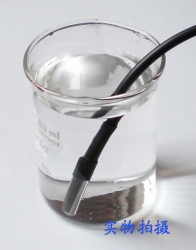
|
Waterproof SS DS18B20 Temperature Sensor, High-quality
stainless steel anti-rust waterproof package (Exact SS Type is not known) SS housing (6 * 30mm), overall
length to end of wire 100 cm. 3.0V ~ 5.5V power supply, 9 to 12-bit adjustable resolution, Wide temperature
range -55 degC to +125 degC, Output leads: red (VCC), blue or yellow (DATA), black (GND)
|
Qty=1
$7
|
Qty=3
$18
|
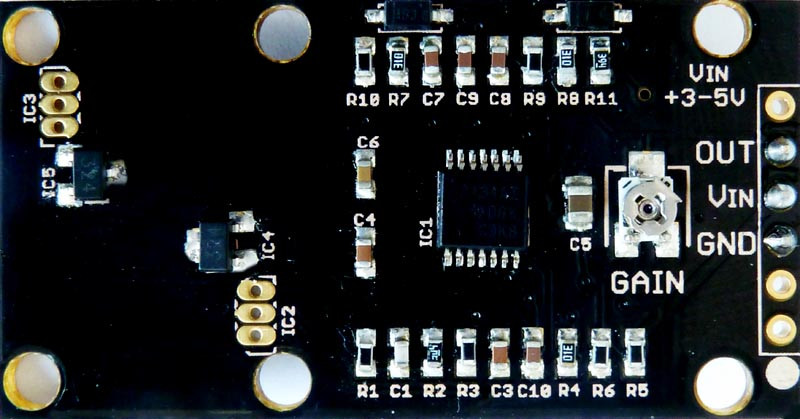
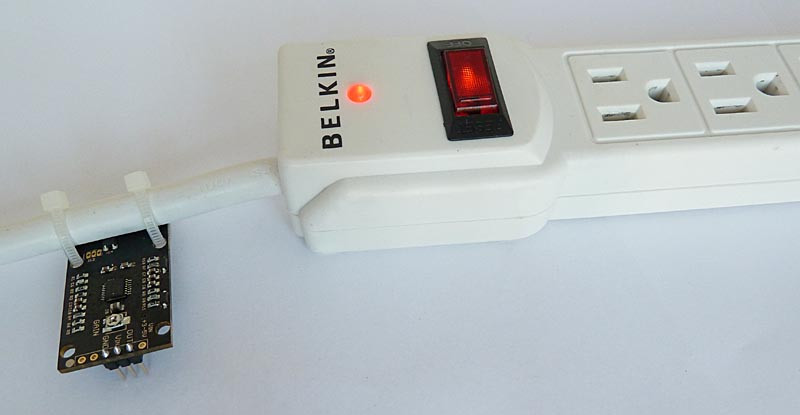
|
Isolated AC Current Sensor,
This a little current sensor was designed with the idea of providing an isolated current sensor for mains voltages.
It uses some Hall Effect Sensors with a lot of gain applied, to sense the magnetic field generated by current in a
wire. The sensor can distinguish a 10 watt load at 120 volts, which means that it can sense a change in current of
around 80 mA. The sensor output is just an analog voltage which is proportional to the current sensed.
This sensor runs at either 3.3 or 5 volts and is easy to calibrate. Just plug in a known
resistive load such as a lamp, and read the output voltage from the sensor. The output is fairly linear - although
maybe not perfectly linear. A gain control allows changing the gain over a range of about 3 to 1.
The sensor should find uses in sensing whether appliances are plugged in and running and
calculating energy usage. It interfaces seamlessly with Arduino and Propeller.
| Vcc |
Sensor Range |
Output Voltage |
Sensor Current |
| 3.3 |
0-12.5A |
0.25-2.6V |
11 ma |
| 5.0 |
0-15A |
0.25-4.6V |
16 ma |
|
$18
|
|
|
|